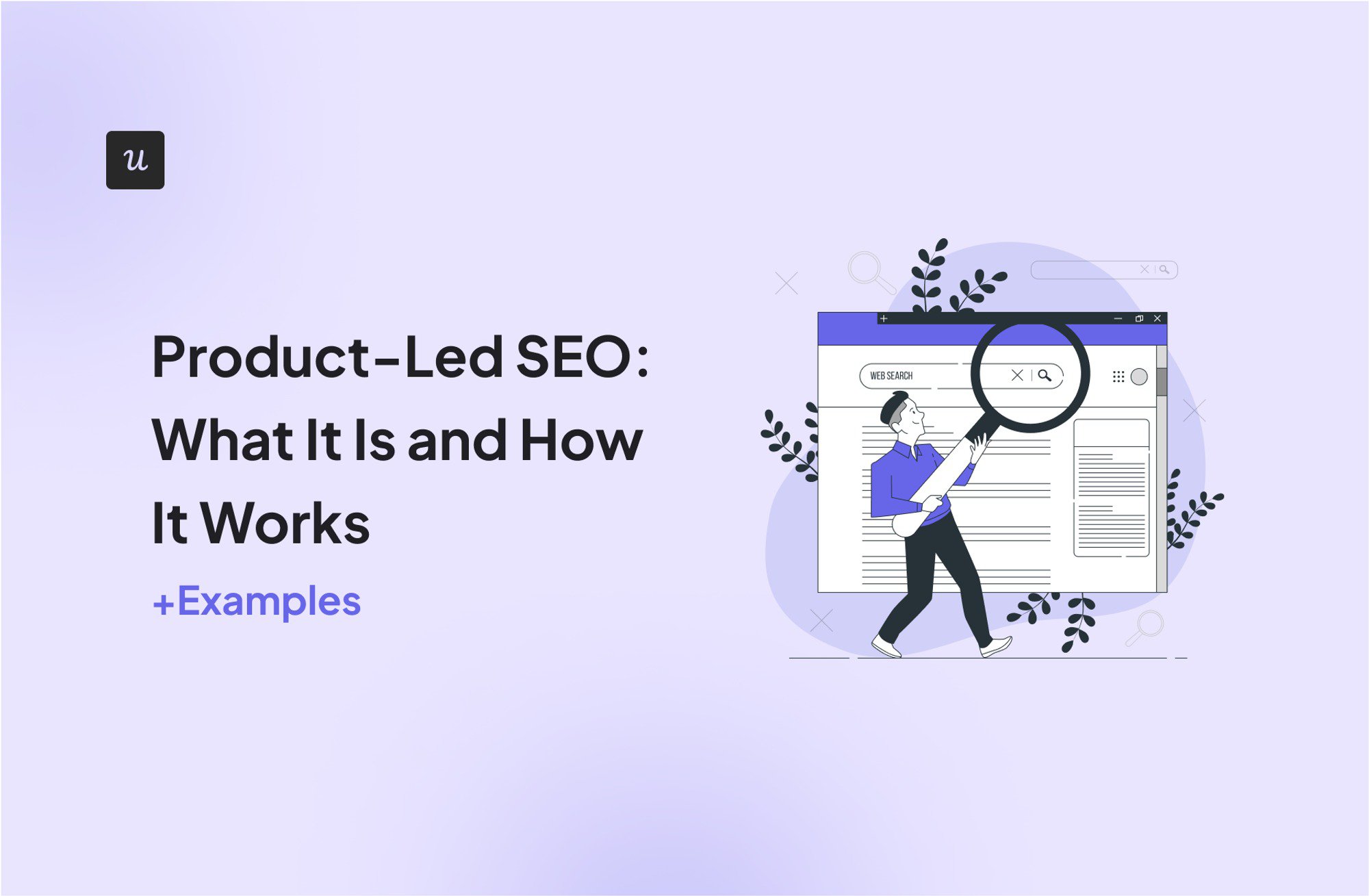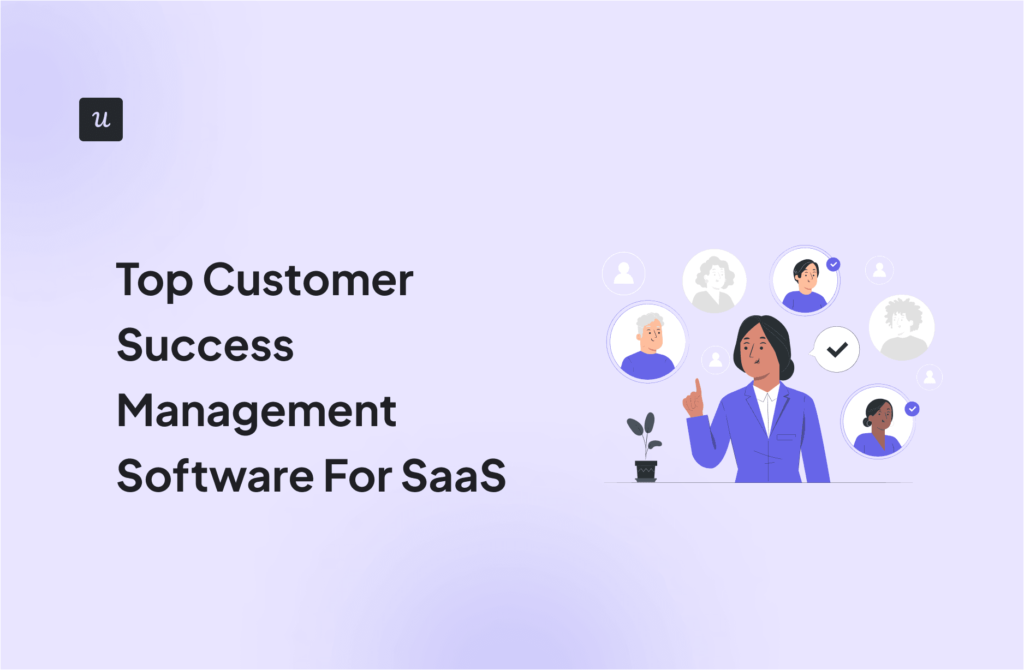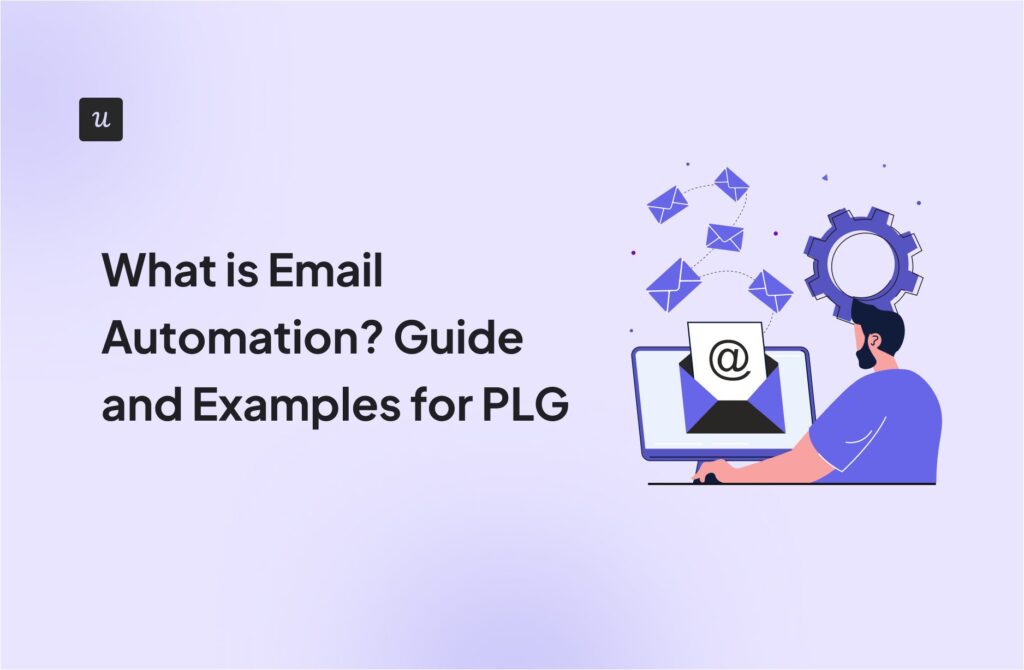
If your current SEO strategy is struggling to drive traffic and sales, it’s time to try a more customer-centric approach with product-led SEO.
While traditional search engine optimization methods focus only on keyword research and search volume, product-led SEO is different. It centers your content creation strategy on actual product-related customer needs and problems, keeping the user as the primary audience.
The end result: increased traffic and revenue! This guide will help you unlock these benefits, offering tips to perfect your product-led SEO strategy, with examples on implementation, too.
Try Userpilot Now
See Why 1,000+ Teams Choose Userpilot

What is product-led SEO?
Product-led SEO is an organic growth strategy where the product itself and its features help attract visitors from search engines.
In this approach, your product’s value proposition and features guide SEO efforts while integrating SEO best practices to drive organic traffic. This differs from most SEO strategies that focus solely on high search volume terms suggested by keyword research tools.
Executing a product-led SEO strategy entails creating content that directly addresses user needs. This means targeting keywords that may have low search volume but higher purchase intent.
What is product-led SEO in SaaS?
For SaaS software products, product-led SEO involves creating content like blog posts, feature pages, and case studies that showcase your product’s benefits and solutions.
It also includes product-led content like optimizing landing pages for different features and ensuring the product provides useful information presented in the best possible way. Other strategies involve encouraging user reviews and offering free trials or freemium versions.
The goal even within the SaaS context is the same – to improve your product’s user experience while meeting certain search engine criteria as well.
Is product-led SEO a good strategy for your business?
Building a sustainable SEO growth strategy is vital for long-term business success, helping generate leads and sales. Investing in product-led SEO is a great opportunity to unlock such success, in addition to other benefits like:
- Increased organic traffic.
- Cost-effective solution.
- Higher search result ranks.
- Improved conversion rates.
- Better brand visibility and credibility.
Product-led SEO is especially effective if you’re marketing a product with:
- Niche Search Demand: Your product addresses a specific business niche with highly specific and targeted search behavior.
- Unique Features: Your product has distinct features that can be optimized for search engines.
- Customer-Centric Content: Your product can create valuable content that directly meets user needs. For example, if you offer project management templates, you can rank each template’s landing page for a specific keyword.
But what do you do once you get such highly convertible traffic?
Use tools like Userpilot to track user behavior in real-time and make product changes accordingly to boost conversion.

The top 10 types of product-led SEO (with examples)
Product-led SEO strategies can fall under multiple categories, depending on what the objective is. Let’s deep dive into each one so you get a better understanding of which SEO strategy best fits your business.
1. Programmatically-generated landing pages
Programmatic SEO (pSEO) includes creating large numbers of targeted landing pages automatically based on product data, features, or user-generated content. Basically, all the landing pages follow the same template but with different information.
A great example is companies like Nannybag – a luggage storage business that automatically generates landing pages for various target locations.

2. Feature-specific landing pages
Feature-specific landing pages are dedicated pages designed to highlight and promote each product feature or use case.
These pages are optimized for search engines with keywords focusing on particular aspects of a feature that address customer needs and problems. The aim is to capture search traffic from users specifically interested in that functionality.
Asana’s task management features are a good example of this organic growth strategy, with pages for different project views like list, board, and timeline.

3. Product inventory optimization
Product inventory sites optimize product listings, categories, and inventory pages to rank for specific product-related searches. This way, when someone searches for a category, optimized product inventory-driven sites rank higher and, therefore, get more traffic.
Home Depot is the perfect example, with its interactive product finder pages for categories like “Interior paint”. This allows users to narrow down options while optimizing for long-tail keywords.

4. Data-driven insights pages
This type of product-led organic growth strategy leverages product data to create valuable content for users. What’s more, these useful insights boost conversion rates by presenting data in an easy-to-understand and visually appealing manner.
Spotify might just be the best example of data-driven insight pages. Its Spotify Wrapped feature generates beautiful personalized year-end music summaries for users.

5. Interactive product demos
Interactive product demos are a promising product-led SEO type. Such demos give customers a walkthrough of your product, highlighting important functionalities relevant to their use case.
You can also directly embed functional product demos directly into web pages to increase conversion and improve user experience.
That’s exactly what Gong does with its interactive product demo, including experiential elements such as the Deal board, Filters, Timeline, Track location, etc.

6. User success stories
A proven organic growth strategy is to create user success stories. These are excellent for showcasing real user experiences and all the pain points users overcome with your product.
Slack does this well, sharing success stories that resonate with users and translate into improved online visibility and SEO growth.

7. Software comparison pages
To boost your organic growth strategy, a commonly used product-led SEO type is comparison pages. Such pages compare different software products and categories to target users searching for such evaluations.
ClickUp does this well, as the comparison page below shows, contrasting its product from the competition.

8. Customizable templates
Users often search for customizable templates they can modify to their needs. To capitalize on this search intent, several SaaS companies now offer such templates to boost their organic growth strategy.
Canva is a great example of a software tool that can leverage this strategy:

9. Integration ecosystem pages
Integration pages are an extremely effective type of product-led SEO, providing information about your product’s partnerships and compatibility with third-party integrations.
These pages aid your organic growth strategy by attracting users searching for specific integrations.
A great example is Zapier’s integration pages for each supported app integration, detailing possible automation as well.

10. Product usage guides
Lastly, product usage guides are a top product-led SEO type you don’t want to ignore.
The goal is to create in-depth, step-by-step guides on how to use your product for specific industries, roles, or jobs to be done (JTBD).
HubSpot does exactly this as part of its organic growth strategy. It creates playbooks explaining how to use their CRM in various industries, such as real estate or healthcare.

Product-led SEO vs traditional SEO
Product-led SEO focuses on using your product’s features and integrated content to drive organic traffic, improve user experience, and meet user needs naturally. This approach is ideal for SaaS products and businesses that can create valuable content within their product ecosystem.
Traditional SEO targets a wider audience, helping you attract users at different stages of the marketing funnel.
While product-led SEO focuses on users with specific product needs, traditional SEO also attracts relevant users who are looking for information and might not be ready to buy it.
To maximize benefits, consider combining both approaches:
- Use traditional SEO to build your pipeline, increase brand awareness, and generate organic traffic at different stages of the funnel.
- Use product-led SEO to attract highly targeted traffic and create valuable, integrated product content that enhances user experience and engagement.
Lastly, use product analytics tools like Userpilot to track performance and effectively convert traffic coming from each organic channel.

Conclusion
To ensure maximum benefits for your SaaS business, combine product-led and traditional SEO strategies.
Soon, you’ll see an increase in your organic traffic and conversions as long as you focus on user needs and leverage your product’s strengths for relevant content creation.
Want to get started with product-led SEO? Get a Userpilot Demo and see how you can increase sales and conversions.







